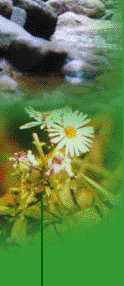Assignment 14.1
Lesson plan
TITLE: Coin Toss
Author: Zeyad Chreim
School District: Houston ISD
Campus: Bush Elementary
Subject: Mathematics
Grade Level(s)/Course: 1st
TEKS Addressed in the Lesson:
Which subject-specific TEKS is going to be addressed in the lesson?
Grade Level: 1st
Subject: Mathematics
Content Objective: (1.6) Number, operation, and quantitative reasoning. The student uses hash marks to estimate probability. The student is expected to:(A)use one-to-one correspondence and language such as more likely, same number as, or two less likely to describe the probability of events; (1.8) Probability and statistics. The student develops a chart of tally marks representing heads or tails. The student is expected to:(A) develop chart representing coin toss; and(B)use information to establish probability of heads or tails. (1.6)Listening/speaking/purposes. The student listens attentively and engages actively in a variety of oral language experiences. The student is expected to:(A)determine the purpose(s) for listening such as to get information, to solve problems, and to enjoy and appreciate (1.8);
Which grade-specific technology TEKS is going to be addressed in the lesson?
Grade Level: 1st
Subject: Mathematics
Content Objective:
Stated Objective, Purpose or Goal of Lesson:
What is the stated objective, purpose, or goal of the lesson that addresses the TEK(s)?
The student will chart tally marks and use this information to answer a series of questions.
Anticipatory Set or Introduction:
What activity will focus attention on the subject matter of the upcoming lesson, establishing a mental set to pique the students' interest?
The teacher will show the students a tally chart. She will have each child estimate how many tails will appear.
Input or Procedures:
What approach will be used to provide information (explain) the lesson to the students?
The teacher will tell the students that they are going to be using coins and tally marks to chart probability of heads or tails. The teacher will do shared reading of instructions.
Modeling:
What modeling will take place to demonstrate what the students will do?
The teacher will pass out coins and each student will flip a coin a specified number of times in order to establish the probability of the number of times tails will appear. What will the tally marks tell us? Answer: The probability of the incidence of tails in a coin toss.
Checking for Understanding:
What check(s) will be used to determine if learners have understood the material and activities of the lesson?
Question: How many tails/heads did you count? If someone else did the same experiment, are they likely to get the exact same result?
Guided Practice:
What initial practice of lesson skill or the follow-up activity, under direct supervision of the teacher will be used?
The teacher will pair up students and pass them out a box of two colors of blocks, ask them to count by hash marks. The students will gather totals and use them to answer a set of related questions.
Checking for Understanding
(Initial Mastery):
What check(s) will be used to determine if learners have understood the material and activities of the lesson?
Question #1: What color has the most? Question #2: What color has the least? Question #3: If you pull a block out of the box without looking, which color are you most likely to get?
Opportunities to Relearn
(Reteach):
If necessary, what alternative teaching methods will be used to teach the same information or skill? What alternative instructional modifications and adaptations that address all learners' needs are necessary, if any?
Independent Practice:
What practice of the skill concept of the lesson, without direct (step-by-step) adult supervision will take place?
The student will receive an individual box to fill from the large group box. Students will then test each others results.
Assessment or Evaluation (Assess Mastery):
What formal assessment that provides learning criteria and indicators through traditional or alternative assessment means will be used?
The student will correctly tally number of blocks and use their chart to answer the following questions. #1: What color has the most? #2: What color has the least? #3: Which color has higher probability?
Enrichment / Extension:
What challenging instructional activities can be provided for students who demonstrate academic proficiency of curriculum objectives?
The student will be given dice to roll to estimate the probability of it landing on each number.
Closure or Ending the Lesson:
What very brief activity will take place that has students state or demonstrate the main objective(s) of the lesson?
The students will compare their results to estimate how much they vary.
Materials:
What preparation must occur before the lesson is ready?
The students should be familiar with addition and tally or hash marks.
What resources should be available for students?
What should be available to the instructor and learner to appropriately and successfully complete the lesson plans stated objective(s), purpose(s) or goal(s)?
Coins, paper pencil, blocks, boxes, dice.
What resources would add to the learning experience?
Poster board to compile results as a group.
Adaptations for Special Education, ESL, and GT students (Adaptive and Assistive Learning)
ESL: No adaptation needed.




